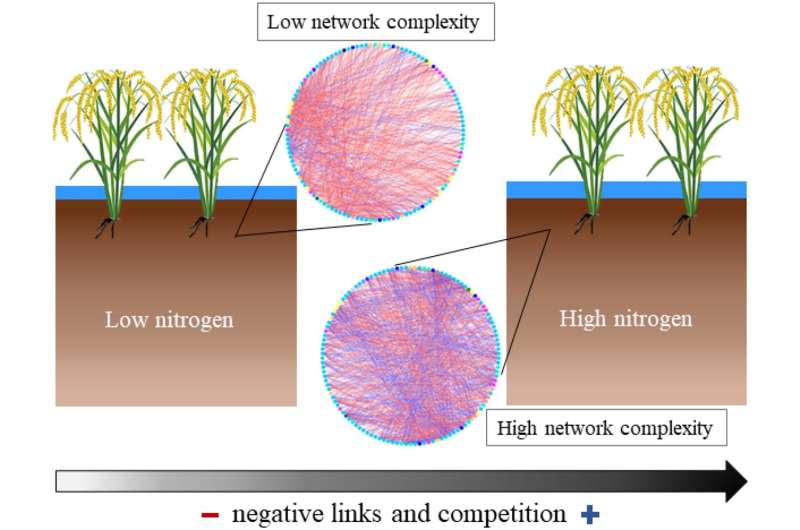This article has been reviewed according to Science X's editorial process and policies. Editors have highlighted the following attributes while ensuring the content's credibility:
fact-checked
proofread
Study finds high nitrogen fertilizer input enhances the microbial network complexity in paddy soil

In paddy field, flood-and-drain cycles produce variations in reduced and oxidized environments, which are appropriate habitats for a wide variety of microorganisms. Nitrogen (N) fertilization drives the structure and function of soil microbial communities, which are crucial for regulating soil biogeochemical cycling and maintaining ecosystem stability.
The N fertilizer effects on soil microbial composition and diversity have been widely investigated, however, it is generally overlooked that ecosystem processes are carried out via complex associations among microbiome members.
A study, appearing in Soil Ecology Letters, demonstrates that compared with low-N group (N0 and N135), the high-N group (N225 and N360) shaped more complex microbial networks. Moreover, positive links predominated across all networks, implying the importance of microbial synergism in N-enriched paddy soils. Interestingly, the proportion of negative links was increased in the high-N network.
In this study, they found that the soil bacterial communities in the high-N fertilization group formed larger and more complex networks, and thus improved the stability of the microbial community. Furthermore, the PLS-PM results demonstrated that the high-N treatments had a more favorable impact on microbial network complexity than the low-N treatments, which further confirmed that high-N fertilization treatments improved the microbial network complexity in the paddy soil.
A complex community interaction network was beneficial to nutrient cycling and accumulation in rice field ecosystems. Plant production, organic matter decomposition, and pathogen control are all increased in agricultural ecosystems that have stable microbial networks.
In addition, both low- and high-N additions, the microbial networks had more positive linkages than negative ones. This demonstrated the significance of microbial synergism in paddy ecosystems, as the great majority of microbial species cooperated mutually to adapt to environmental changes.
However, they also observed that the proportion negative linkages increased in the high-N network, indicating that excessive N addition may enrich a number of competing microbes. A possible explanation for this finding is that more N fertilizer stimulated microbe growth, which will increase competition for nutrients.
The study emphasizes that the majority of microbial species resist harsh environments through cooperation, and further advocates optimizing N fertilizer management to promote the microbial interactions for sustainable agriculture.
More information: Yanan Chen et al, High nitrogen fertilizer input enhanced the microbial network complexity in the paddy soil, Soil Ecology Letters (2023). DOI: 10.1007/s42832-023-0205-3
Provided by Frontiers Journals




















